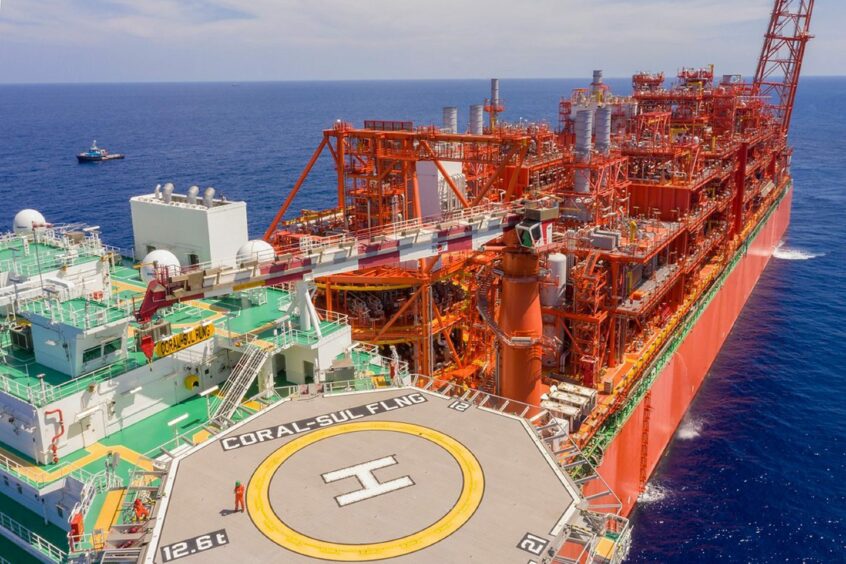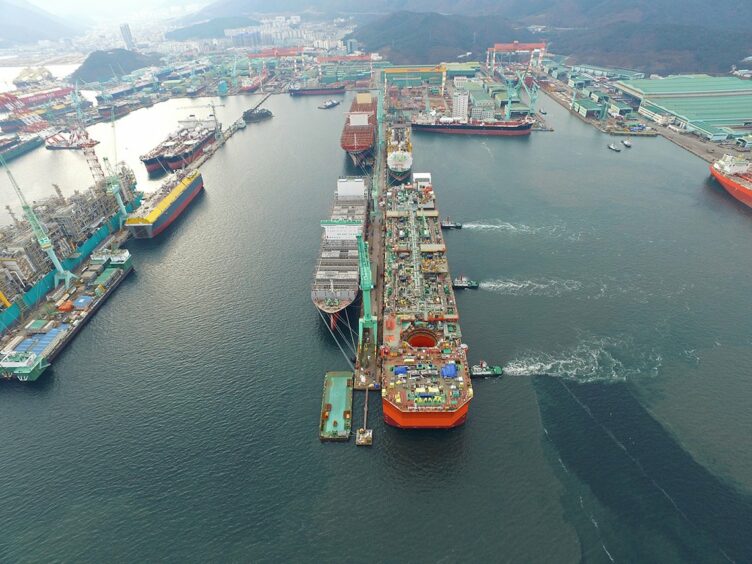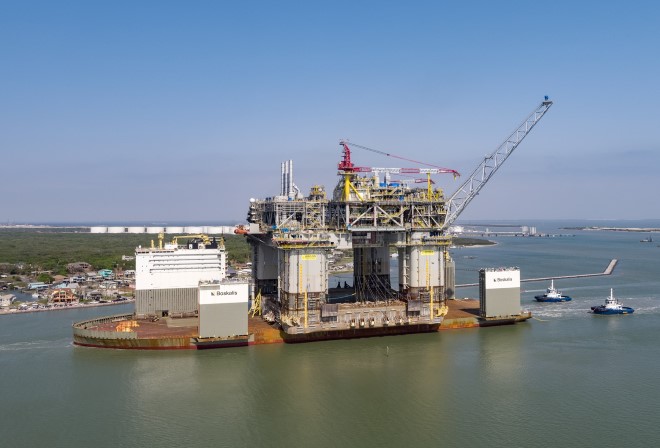
Progress on the world’s largest oil and gas fields has been a mixed bag in 2022, with the start-up of several major projects pushed into 2023 and beyond.
Analysis compiled by GlobalData at the start of the year suggested the ten largest oil and gas developments of 2022 would represent some 0.3% of total global upstream production in 2022, and 0.7% of remaining recoverable reserves.
Dominated by gas, the group estimated these ten projects would bring around 410,000 barrels of oil equivalent per day (boepd) in new production online.
However, political and currency volatility coupled with post-pandemic supply chain delays have seen fewer than half reach completion, as timelines shift further into next year and beyond.
First, the successes.
Liza
ExxonMobil announced the start up of production at Guyana’s second offshore oil development on the Stabroek Block, Liza Phase 2, in February.
Production at the Liza Unity floating, production, storage and offloading (FPSO) vessel was expected to reach its target of 220,000 barrels of oil later this year.
Total production capacity offshore Guyana was rated at more than 340,000 barrels of oil per day, though as of October Exxon said it was producing nearly 360,000 bpd from the first and second phase developments – operating above design capacity.
The company plans to bring a third 220,000 bpd project, Payara, online by the end of 2023. A fourth, the 250,000 bpd Yellowtail, should start in 2025.
It marks rapid progress since the first discovery was uncovered just seven years ago and the Liza Destiny FPSO began production in December 2019.
The Stabroek Block’s recoverable resource base is currently estimated at more than 10 billion oil-equivalent barrels.
The supermajor posted a succession of discoveries through the year, and now expects Guyana to be producing more than 1 million barrels per day of oil by 2030.
Pegaga
Mubadala Energy reported first gas flows from its Pegaga project in Malaysia in March.
The facility, which feeds the Petronas-led Bintulu LNG export complex onshore Malaysia, is designed for gas throughput of 550 million standard cubic feet of gas per day plus condensate.
By mid-year Mubadala confirmed the field was delivering around 500 million cubic feet per day gas and 16,000 bpd of condensate.
However, a series of outages at the Sabah-Sarawak Gas Pipeline (SSGP) have plagued deliveries to customers.
Coral Sul
Eni and ExxonMobil confirmed the start up of the Coral Sul floating LNG (FLNG) project, offshore Mozambique in October.
Eni said that it had begun producing gas from the reservoir to the FLNG facility in June and expects Coral Sul to provide it with around 10,000 barrels of oil equivalent per day in 2022, rising to 28,000 boepd in 2023.
The FLNG vessel arrived offshore Mozambique in January, while offshore operator Eni hooked the vessel up to the six subsea production wells in May.
Coral Sul has capacity to produce 3.4 million tonnes per year of LNG and is drawing on a reserve of 450 billion cubic metres.
BP has contracted the entire output of Coral Sul, for 20 years.
Semakovskoye
A late entry into production, news on the Semakovskoye field in Russia’s Yamal peninsula was scarce through the year, in part due to the sanctioning of many of the country’s companies in light of its invasion of neighbouring Ukraine.
However, Gazprom reportedly confirmed the start up of production at the 2 billion boe (320 billion cubic metre) gas field on 6 December.
New large field – Semakovskoye – enters operation in Arctichttps://t.co/dDYziJPR0U
— Gazprom (@GazpromEN) December 6, 2022
The field is located in western Siberia, around 75 miles north east of Yamburg. It lies on land at the Taz Peninsula and extends offshore under the Taz Bay in the Kara Sea.
Development is being undertaken by RusGazAlyans, a 50:50 joint venture between Gazprom and RusGazDobycha. The group made a final investment decision (FID) on the project in mid-2020.
A total of 19 wells are planned, with Gazprom stating that the next phase of production will see output brought up to design level of 14.2bcm
Delays plague other key projects
Other projects have seen production pushed into next year.
Iran’s South Pars Phase 11 – the last in the process of full development of the South Pars gas field, which spans the Iran-Qatar border in the Persian Gulf – had been a priority for the National Iranian Oil Company (NIOC).
However, by May this year a revised scheduled put start-up in May 2023 (though more recent reports suggest this could be brought forward to February).
Nigeria’s Seplat also pushed first gas from its Assa North-Ohaji South Gas project (ANOH) back to the first half of 2023.
In a July update the company said the scheme was at “87% completion”, noting that it had encountered difficulties drilling under the River Niger.
The Nigerian Gas Co. (NGC) is delivering pipelines, which will link the project to Oben, and with a spur line set to be completed in the first quarter of 2023, ANOH should brought online during the first half of next year.
Start-up at Azerbaijan’s Absheron gas condensate field in the Caspian Sea will also move into next year.
The installation of offshore modules was completed in late September, according to consortium JOCAP which consists of operator TotalEnergies (40%), alongside SOCAR (40%) and Engie (20%).
Azeri President Ilham Aliyev told a security conference in late November that the first phase of production would come online in 2023, with output amounting to some 1.5bcm.
Across the Caspian, progress on Uzbekistan’s 25 Years of Independence (M25) sour gas field has slowed too.
First production from the field – the country’s largest undeveloped gas reserves and estimated to hold around 150 bcm in proven and probable reserves (around 790 million boe) – had been expected this year, though few updates have been made since 2021.
In the US Gulf of Mexico, first oil production from Shell’s deepwater Vito project is now eyed for early 2023, licence partner Equinor said in late summer.
Targeting recoverable resources of 300 million boe, peak production from the field is estimated at around 100,000 boepd.
Likewise, BP’s Mad Dog 2 project – served by the mammoth newbuild Argos platform – had been expected online during the year, but is now reportedly set to be delayed until mid-2023, according to project partners.
The project is targeting recoverable reserves of 515million boe, while Argos boasts capacity to produce up to 140,000 gross barrels of crude oil per day from up to 14 production wells.
Recommended for you


 © BP
© BP